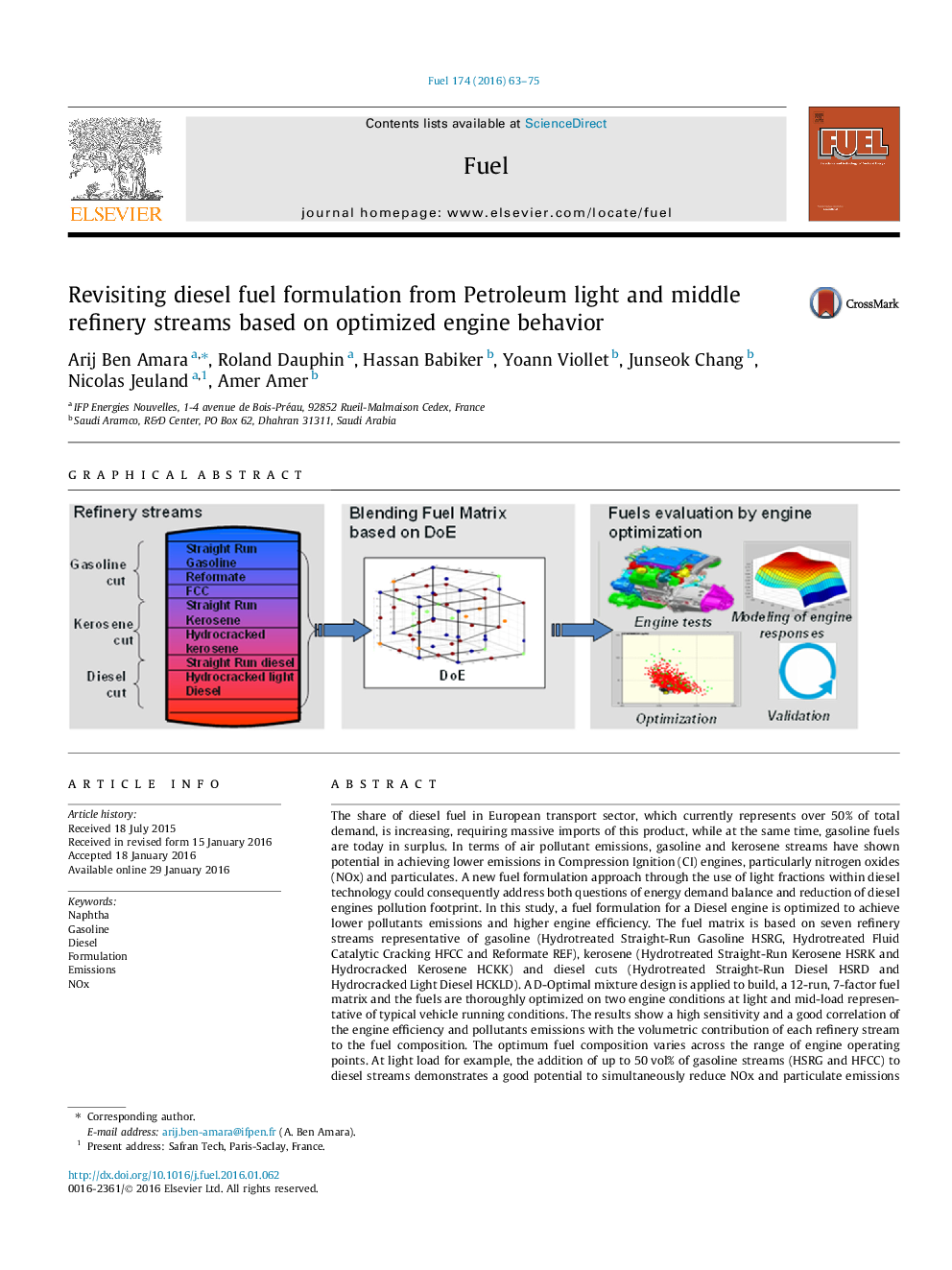| کد مقاله | کد نشریه | سال انتشار | مقاله انگلیسی | نسخه تمام متن |
|---|---|---|---|---|
| 205034 | 461095 | 2016 | 13 صفحه PDF | دانلود رایگان |
The share of diesel fuel in European transport sector, which currently represents over 50% of total demand, is increasing, requiring massive imports of this product, while at the same time, gasoline fuels are today in surplus. In terms of air pollutant emissions, gasoline and kerosene streams have shown potential in achieving lower emissions in Compression Ignition (CI) engines, particularly nitrogen oxides (NOx) and particulates. A new fuel formulation approach through the use of light fractions within diesel technology could consequently address both questions of energy demand balance and reduction of diesel engines pollution footprint. In this study, a fuel formulation for a Diesel engine is optimized to achieve lower pollutants emissions and higher engine efficiency. The fuel matrix is based on seven refinery streams representative of gasoline (Hydrotreated Straight-Run Gasoline HSRG, Hydrotreated Fluid Catalytic Cracking HFCC and Reformate REF), kerosene (Hydrotreated Straight-Run Kerosene HSRK and Hydrocracked Kerosene HCKK) and diesel cuts (Hydrotreated Straight-Run Diesel HSRD and Hydrocracked Light Diesel HCKLD). A D-Optimal mixture design is applied to build, a 12-run, 7-factor fuel matrix and the fuels are thoroughly optimized on two engine conditions at light and mid-load representative of typical vehicle running conditions. The results show a high sensitivity and a good correlation of the engine efficiency and pollutants emissions with the volumetric contribution of each refinery stream to the fuel composition. The optimum fuel composition varies across the range of engine operating points. At light load for example, the addition of up to 50 vol% of gasoline streams (HSRG and HFCC) to diesel streams demonstrates a good potential to simultaneously reduce NOx and particulate emissions and an overall good engine performance. Reformate, a highly aromatic gasoline stream, did not offer an advantage at any of the tested conditions due to high particulate emissions. The two kerosene streams perform similarly to diesel streams in terms of engine efficiency and pollutants emissions. A compromise fuel, composed of 50 vol% HSRG and 50 vol% HSRD, is proposed that allowed halving NOx and particulate emissions and reducing the fuel consumption by 5 wt% compared to reference diesel HSRD. The optimized fuel represents an alternative for balancing diesel and gasoline demand and for pollutant emissions reduction.
Figure optionsDownload as PowerPoint slide
Journal: Fuel - Volume 174, 15 June 2016, Pages 63–75
